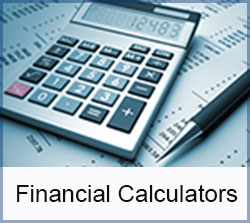Optimizing Wealth Through Asset Re-Allocation

If you are an active investor, your investment holdings probably include many different asset classes. For many investors, diversification is a very important part of the wealth accumulation process to help manage risk and reduce volatility. Your investment portfolio might include stocks, bonds, equity funds, real estate and commodities. All these investment assets share a common characteristic – their yield is exposed to tax. From a taxation standpoint, investment assets fall into the following categories:
Tax Adverse
The income from these investments are taxed at the top rates. They include bonds, certificates of deposits, savings accounts, rents etc. Depending on the province, these investments may be taxed at rates of approximately 50% or more. (For example, Alberta 48.0%, BC 49.8%, Manitoba 50.4%, Ontario 53.53%, Nova Scotia 54.0%).
Tax Advantaged
These investments are taxed at rates lower than those that are tax adverse. These investments include those that generate a capital gain (stocks, equity funds, investment real estate, etc.), or pay dividends. The effective tax rate on capital gains varies depending on province from approximately 24% to 27%. For dividends, the range is between approximately 30% to 41.6%.
Tax Deferred
Tax deferred investments include those investments which are held in Registered Retirement Savings Plans or Registered Pension Plans (such as an Individual Pension Plan). One advantage of these investments is that the contribution is tax deductible in the year it was made. The disadvantage is that the income taken from these plans is tax adverse as it is taxed as ordinary income and could attract top rates of income tax.
The growth in cash value life insurance policies such as Participating Whole Life and Universal Life is also tax deferred in that until the funds are withdrawn in excess of their adjusted cost base while the insured is still alive, there is no reportable taxable income.
Tax Free
Very few investments are tax free in Canada. Those that are tax free include the gain in value of your principal residence, Tax Free Savings Accounts (TFSA’s) and the death benefit of a life insurance policy (including all growth in the cash value account).
While Canada is not the highest taxed county in the world (that distinction belongs to Belgium) it is certainly not the lowest. (According to the Organization for Economic Co-operation and Development, Canada sits as the 23rd highest taxed country in the world). It is also true that in addition to the taxes Canadians pay while they are living, the final insult comes at death.
Generally speaking, you have three beneficiaries when you die. You have your family, your favourite charities, and the Canada Revenue Agency. They all take a slice of your estate pie. Most people would rather leave more to their family and charities than pay the CRA more than they need to.
As our estates grow, they include funds that we intend to leave to our children and possibly to charity. They also include funds we are likely never going to spend while we are alive.
The secret to optimizing the value of your wealth for the benefit of your estate is to re-allocate those assets that you are never going to spend during your lifetime from investments that are tax exposed to those that are tax free.
One of the best ways to do this is through life insurance. As mentioned earlier, assets which are tax free include the death benefit of a life insurance policy. Systematically transferring funds from the tax exposed investments to, for example, a Participating Whole Life Policy, not only eliminates the reportable tax on the funds transferred, it greatly increases the overall size of the estate to be left tax-free to your beneficiaries – your family and your charities.
Case Study
Let’s consider Ron and Sharon, aged 58 and 56 respectively. They have been told that they have a liquidity need of approximately $1,000,000 which would become payable at the second death. They are also unhappy about the taxes they are paying annually on their investments. They elect to re-allocate some of their assets to a Participating Whole Life policy for $1,000,000 with premiums of $31,890 for 20 years.
Over this period, they will transfer a total of approximately $640,000 of investments exposed to income tax to a tax free environment. If we assume that their life expectancy is 35 years, the Whole Life policy will have grown to a death benefit of approximately $3,300,000*. This represents a pre-tax equivalent yield over this period of approximately 11%. Not only is there more than enough to pay the tax bill but there are funds left over for the family and any charitable donation they wish the estate to make.
In addition, with the transfer from a taxable to tax free investment, income taxes that would have been paid during their lifetime has also been reduced. Along the way, the Participating Whole Life policy has a growing cash value account which could be borrowed against should the need arise. At the 20th year for example, the cash value of the policy (at current dividend scale), would be slightly under $1,000,000.
This case illustrates only one example of how it is possible to optimize the value of an estate through asset re-allocation. By using funds you are never going to spend during your lifetime, you can create a much larger legacy to benefit others while reducing the total cost of your tax bill.
If you would like to investigate this concept to determine the value it can provide you and your family, please be sure to contact me. As always, please feel free to share this information with anyone you think would find it of interest.
* Values shown are using Equitable Life’s Equimax Estate Builder assuming current dividend scale for 2018.


Comments are closed.